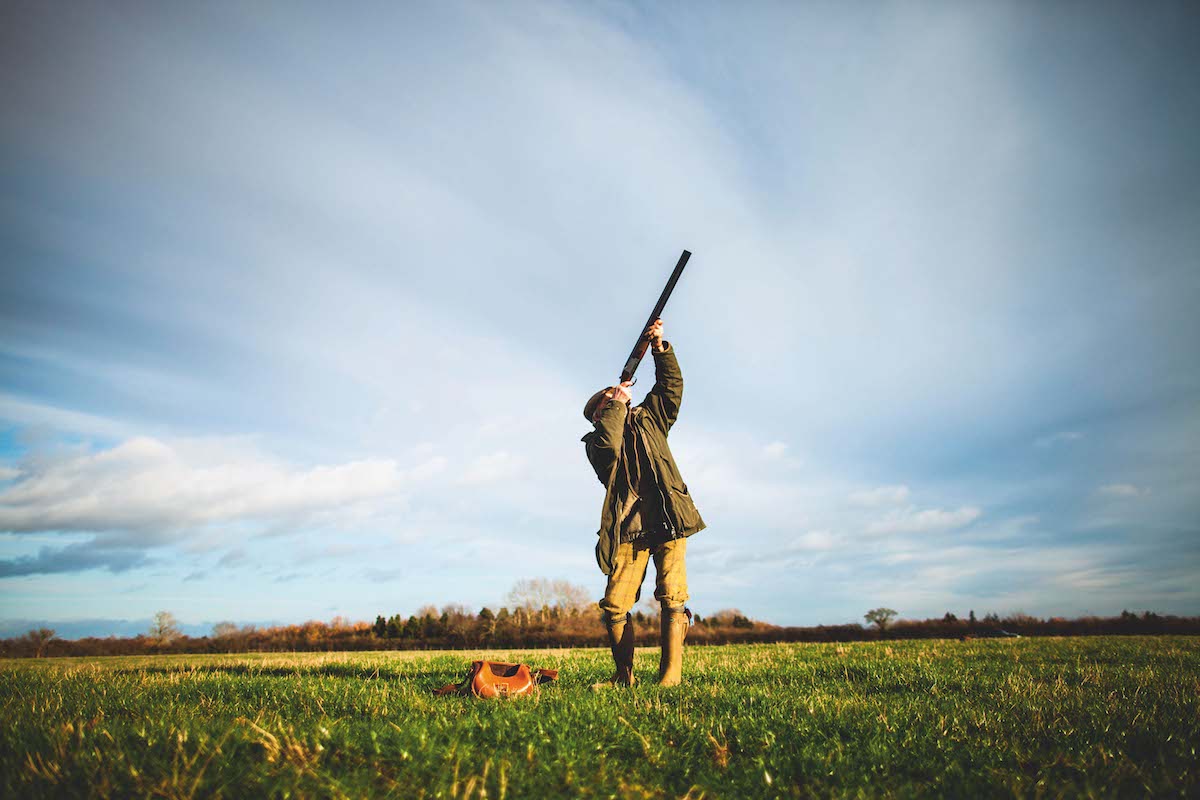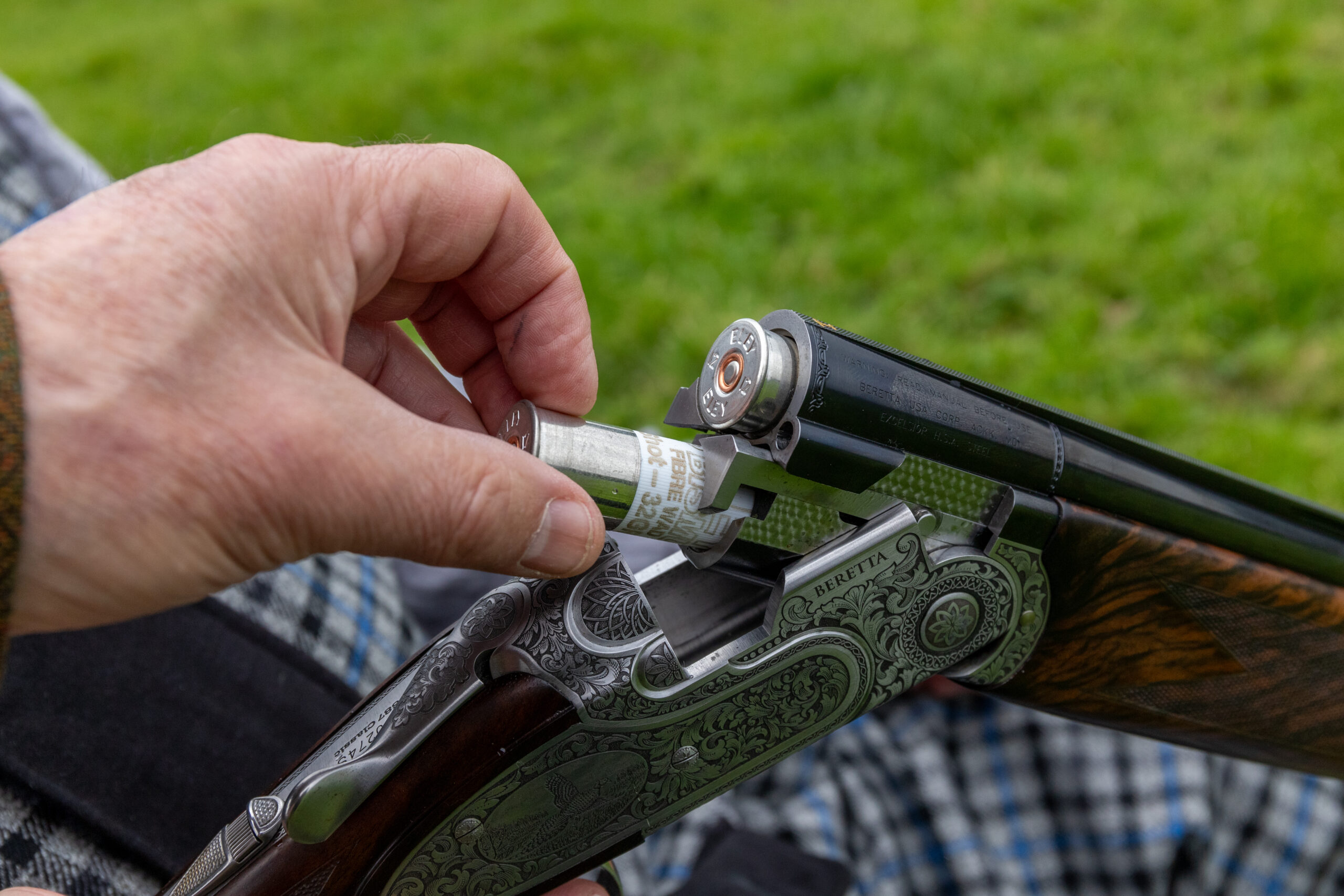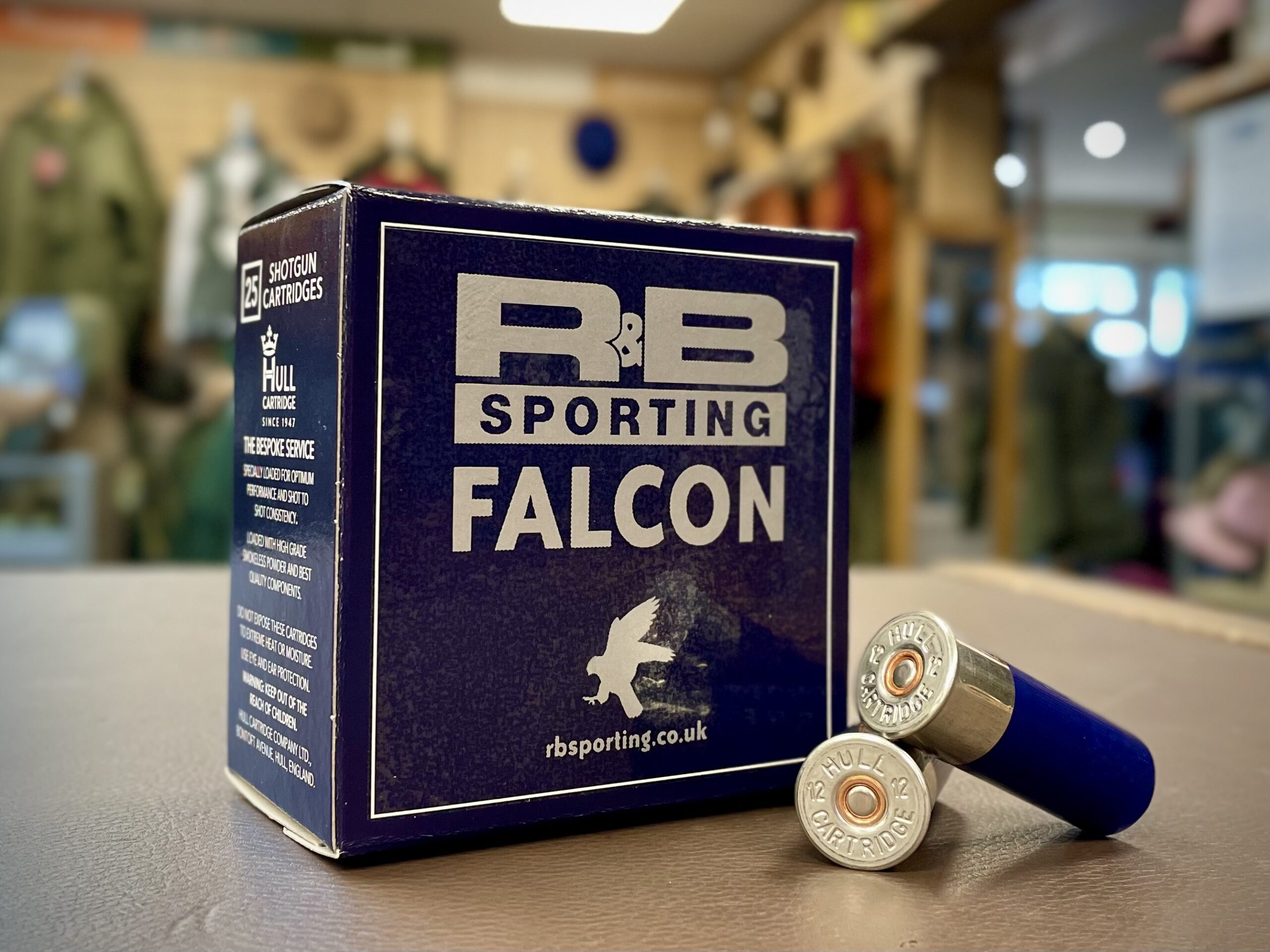Steel shot and lead: sizing up the differences
Can steel shot cartridges match the performance of lead, asks Richard Atkins, as he sizes up the differences of rules between the UK, Europe and the US as the change away from lead fast approaches

Moving to steel shot is throwing up numerous and serious issues
The move away from lead shot with what was originally a voluntary, phased transition to non-lead shot seems likely to dominate topics of concern for shotgun enthusiasts for some time yet. The transition is proving vastly complex and difficult to meet. Progress is hindered by supply shortages, plus a timescale that now seems even more unhelpful than it did at the beginning. (Read BASC slams Government’s lead ammunition review.)
With the 2022 game season already upon us the choice of cartridges is still limited for those who must, or feel they should, use non-lead cartridges. A quick scan of the non-lead options on major online cartridge seller Just Cartridges website shows that such choices are tiny compared with the options with fibre wad game loads. When I checked it also showed that a notable proportion of the options were, at that time ‘sold out’. Fresh stocks were ordered and anticipated but deliveries are hampered by component shortages as well as some technical issues that inevitably arise from such pressurised radical changes to any product range.
Particular topics of concern arise as to whether or not the non-lead shotgun cartridges offered will meet shooters’ needs. Increasingly heard among shooters – and seen on shooting forums – is the question of why are the steel shot cartridges in the UK of lower performance than those used in America? One very salient point to note here is one that seems not well understood: SAAMI (Sporting Arms and Ammunition Manufacturers’ Institute) recommended performance standards are voluntary while CIP (Permanent International Commission for the Proof of Small Arms) rules are mandatory. (Read moving away from lead shot to steel – what you need to know.)

Two 24g loads with steel on the left much deeper
Steel shot and lead
This makes a considerable difference in the way the two sets of specifications are applied to steel shot and lead. In the USA all manufacturers know the SAAMI recommendations and, mostly, adhere to them: when the recommended pressures and velocities enable cartridges to do what is required then there’s no need to do otherwise. For all regular lead shot loads there has seldom been any need to step outside SAAMI figures.
There is a hangover from years long past when even some famous target loads produced higher pressures than were permitted in the UK. I well recall sending some factory Remington RXP target loads for proof testing, along with my own hand loads. The factory pressures came back around a quarter-ton higher than the UK proof limit. This drew a comment from the then Proof Master for exceeding the UK limit but only an acknowledgement that it was “not unusual for American ammunition”. But nothing was done beyond comment on the report. That was quite prudent as millions were used every year without problems. When cartridges I send for proof testing today fail proof the maker and/or distributor is contacted and, where appropriate, cartridges can be recalled from sale.

Larger size of steel shot, left, over its equivalent in lead, right, is evident
Heavier loads for non-lead shot is where the difference between voluntary and mandatory is more significant and steel shot has highlighted this. When dealing with lighter pellets – such as steel – requiring sufficient energy to produce a lethal blow at range there are two ways of doing this: one is to use larger pellets and the other is to increase velocity. Although SAAMI does have recommended velocity limits, these, being advisory, can be exceeded without any action from SAAMI; there is no legal force requiring makers to adhere to the recommendations if they so choose. The onus is upon the cartridge manufacturers to act professionally and with diligence to ensure they do not place on the market ammunition that might prove inherently dangerous. The litigation laws in the USA are tough enough to ensure cartridge makers do not take risks over such.
With ammunition used in large quantities there are procedures in place – should any unsuitable ammunition reach market – that allow major suppliers, distributors and retail outlets to be advised quickly and to stop further sales and return stocks. Attempts are made to locate any sold and notices are supplied to prominent shooting websites, forums and magazines. In my years as a gun magazine editor I received several such notices from American ammunition makers (usually metallic ammunition, not shotgun).

Only room for short wad on 28g steel shot in 70mm case
Under CIP rules all member countries must endeavour to prevent the sale of ammunition that does not comply with CIP rules. I am aware of numerous instances where cartridge manufacturers and importers have been contacted by the Proof Authorities in the UK and of product recalls.
SAAMI velocities for some non-lead cartridges do exceed CIP rules, as can be found in their Voluntary Performance Standards. Interestingly, although SAAMI figures for steel shot loads do have advisory velocity figures they only apply suggested maximum shot load weights for the different gauges and chamber lengths. SAAMI does not, however, specifically mention momentum.

Evidence of weaker biopolymers on ‘eco friendly’ options
Momentum matters
Momentum is a key factor in all the prescribed loads for each gauge and chamber length in the CIP mandatory specifications. This places strict limits on how the CIP velocity specifications can be applied to various shot load weights in each calibre. Whereas in the USA a manufacturer may be satisfied that increasing velocity by 20 metres per second or so will make their super-duper 32g load of No 4 steel shot pheasant load a close match for lead shot performance, without proving injurious to gun or shooter, then he can make and market that product. The maker’s only concern will be that no problems arise. The ammunition boxes will, no doubt, carry plenty of caveats as to appropriate use of all such products.
The CIP insistence upon velocity and momentum limits mean that all UK manufacturers – and any overseas makers selling into the UK market – do not have that same freedom to use their own experience and discretion.
- Take a typical 67mm (*), 30g No 6 lead game load for lowland driven pheasant. This will have a velocity (@ 2.5m from the muzzle) of around 390 metres per second, a momentum figure of 11.7 Ns. This is inside the CIP limit for steel shot (there is no momentum limit for lead shot – the reason why is significant) (*) for 65mm/2½in chambers.
- Needing larger diameter shot in steel to make up for the 30% reduction in weight becomes an issue with shorter chambers. Also, with CIP mandating a maximum shot size of 3.25mm diameter – which is between UK No 3 and 4 (hence the new size descriptions of Fe 4 and also 4A) for Standard Steel cartridges, this has become the primary size chosen for such game load cartridges. The combinations of case and wad capacity now determine how much shot can be safely loaded into cartridges for typical ‘English’ game guns with 2½in chambers. Taking two brands I have to hand, one is loaded with 24g ( 7⁄8oz.) Fe4 and the other 27g (<1oz.) 4A.
Another problem is that larger pellets leave larger spaces between them and so fewer pellets can be fitted into the same volume, as shot diameter increases. There is no safe way around this but it means steel shot load weight in any given cartridge length is more restricted with steel shot than it is with lead. There can be no equivalent for cartridges such as the Eley Maximum with a lead shot load of 34g for (occasional) use in 65mm/2½in chambers but loaded with steel shot.

Steel shot can result in serious choke damage
Barrel damage
CIP obviously included momentum in its specifications for sound reasons. Much testing was done prior to introducing the rules for steel shotguns and cartridges. The reason for introducing velocity and momentum limits for both Standard Steel and High Performance steel loads is to reduce the possibilities for damage to guns to as low a figure as reasonably possible. Given that guns are made in many types and of different designs, weights and quality, as well as with a range of bore sizes even within a given calibre –12-bore can range from 18.2mm (0.716in) up to 18.9mm (0.744in) – it is clear that CIP had to take into account a wide range of possibilities.
Prime consideration is obviously directed to barrel damage with hard shot such as steel. CIP is primarily concerned with barrel bulging – most commonly of the ‘ring bulge’ type – where high performance hard shot loads are concerned. Steel does not compress as lead shot does and this creates powerful outward forces as the shot is accelerated along the barrel bore. Larger shot are increasingly prone to produce greater outward ‘vector’ forces as each lower layer of pellets in the shot load attempts to force their way in the valley formed between each touching pellet above. Larger pellets are generally associated with heavier shot loads because heavier pellets are required to cleanly despatch larger game shot at greater distance. This is why the allowable CIP momentum figures increase with increases in bore and chamber length and why maximum shot sizes are stated, being up to 4mm (BB approx). (Read will my shotgun be safe with steel shot?)
Within 12-bore cartridges momentum limits range from 12 Ns in Standard Steel (all chamber lengths) and for steel proof marked guns from 13.5 N/s in 70mm cases to 15 Ns in 76mm cases and 19 N/s for 89mm (3½in) cases/chambers. The reasoning would indicate that larger chambered guns are likely to be heavier and with thicker barrel walls and so be less susceptible to bulging.
Ring bulges have been recorded as most likely to occur where the heavier shot loads of harder pellets meet an obstruction. In the case of steel shot loads, being unable to compress, the choke is often the point where resistance to forward motion occurs, with shot pellets forced to squeeze into a smaller space. Unlike lead shot, which can be both squeezed and pellets repositioned to form a slightly longer, smaller diameter shot charge, steel shot must rely largely upon the repositioning aspect (and some burying into the wad cup walls).

Bulging in the barrel can be caused by excess presure from steel loads
The choke is obviously near the muzzle where gas pressures are quite low but momentum is at its highest. The sudden constriction in the barrel can cause the shot pellets to produce a much increased outward vector force on the barrel wall and this can lead to a ring bulge. Barrels are most unlikely to ‘blow up’ as some imagine (just read a few internet shooting forums).
Such ring bulges may be quite slight and may not even be noticed by the owner, especially in fixed-choke guns. Slight ring bulges may be able to be repaired by a barrel specialist but larger bulges will need a different approach, even the barrel replaced.
The fact that the CIP has set its maximum velocity levels only marginally higher for High Performance non-lead cartridges than for what they call ‘Ordinary’ and applies to Standard Steel, indicates that it found velocity itself to be a potential problem with harder, non-lead shot.
With SAAMI velocity non-lead voluntary standards listing 1,700 feet per second, measured @ 3 feet from the muzzle, this is a significant uplift from the 430 metres/second (1411fps) @ 3 metres from muzzle CIP figure. This is why BASC made mention at the outset of the move towards a voluntary move away from lead shot that BASC was part of a CIP working group, with UK representation, “Studying the possibility of raising velocity and shot weight limits to those set by SAAMI (the US equivalent to CIP) to increase performance”. I have heard nothing about this since. Hopefully some movement, however small, may be forthcoming.
Reality check
We have looked at some options that have been launched and reported in Sporting Gun. We intend to report on more, as they become available. However, it is evident that some manufacturers appear to be struggling to meet the demands of their customers at this time. We will endeavour to report on new products in future issues.
From our early results on patterning and penetration comparisons it is evident that the premium lead shot game loads have recorded performance levels that steel shot loads (the likely primary shot type to replace lead) could struggle to match. As always we are seeing some bold claims for some newly launched non-lead cartridges and hope their ‘in the field’ performance matches the marketing descriptions!
Several factors make it harder for steel shot to match the best lead shot loads and these are now well known. It is worth a brief recap to give a better picture of the problems cartridge manufacturers face in producing equivalent, or near equivalent, performance levels. These are: lighter weight; greater volume; increased hardness; prone to rusting. Each of these properties bring with it a hurdle to be overcome.
Lighter weight requires that the pellet size used is increased. It is currently suggested that we go up two shot sizes, so that if you would choose No 6 shot in lead that you use steel No 4. Two consequences of going up in shot size to emulate lead shot with the 30% (approximately) steel shot is that the diameter also increases. Larger diameter shot has two important downsides: one is increased frontal area, which will increase resistance to movement through the air (drag). Larger diameter shot also means that the pellets take up a greater volume of space within a cartridge, and this makes it more restrictive as to how much shot can be fitted into a given length of cartridge case. A fully protective cup wad, able to prevent any steel pellets touching the barrel wall, requires sturdier construction than conventional plastic wads to prevent ‘push through’ of the very hard, non-deforming shot. Extra hardness requires that steel shot does not touch the barrels, from the moment the crimp closure opens to exiting the muzzle otherwise damage is likely to occur.
To prevent this the shot must be contained in a cup wad of some form, one able to contain all of the pellets within so that no pellets contact the forcing cone or the barrel bore during their journey from case to the atmosphere. That sounds simple enough given that plastic wads have achieved this with few problems for over 20 years, but the big caveat here is that the years of experience built up with steel shot and plastic wad cartridges are of less help than might be thought. The reason is probably the largest ‘fly in the ointment’ experience that any cartridge makers have had to face in years, possibly ever: that ‘fly’ is the move away from conventional plastic wads to ‘eco friendly’ options.
Case capacity considerations
Some case capacity can be gained by reducing, or deleting, the cushioning centre section of the full cup wad for steel shot. However, now cartridge makers are faced with using eco-friendly plastic materials in place of high performing HDPE oil-based plastics, those currently found for wad manufacture have not shown the same physical strength properties as HDPE. Thus wads made from biopolymers (and other non HDPE materials) need to be thicker, also reducing capacity.
A uniquely British problem?
The result of these factors combine to mean that the maximum steel shot load weight for any given case length is significantly less than it is with lead shot. This poses special difficulties for the shorter length cartridge cases and the guns they are designed for and especially cartridges for use in 2½in/65mm chambers. This makes for a difficult situation in the UK, where this short chamber length has, for many years, been a mainstay of British shooters. It is the chamber length associated with so many excellent ‘English’ game guns from makers provincial, as well as Birmingham, London and beyond. Typically they are fast handling, fairly lightweight guns that handle so well to provide performance and pleasure to the user in the typical game shooting conditions widely found within these shores, conditions they were designed and refined for.
A good many of these short-chambered guns were exported too but it is here in the UK where so many of them are still in regular use each season. Although high bird shoots feature in many shooters’ thoughts, conversations and articles in shooting magazines, the reality is that a majority of game shooting here does not involve ‘stratospheric’ height gamebirds. And that is why the typical game gun, usually a side-by-side, is still an excellent tool for such. But will this remain so?
From the foregoing information it would appear that, at the very least, some versatility will be lost and some reduction in sporting distance required. But, hopefully, many of these much treasured and well-used guns will still be able to see use in the field for a good while yet.








